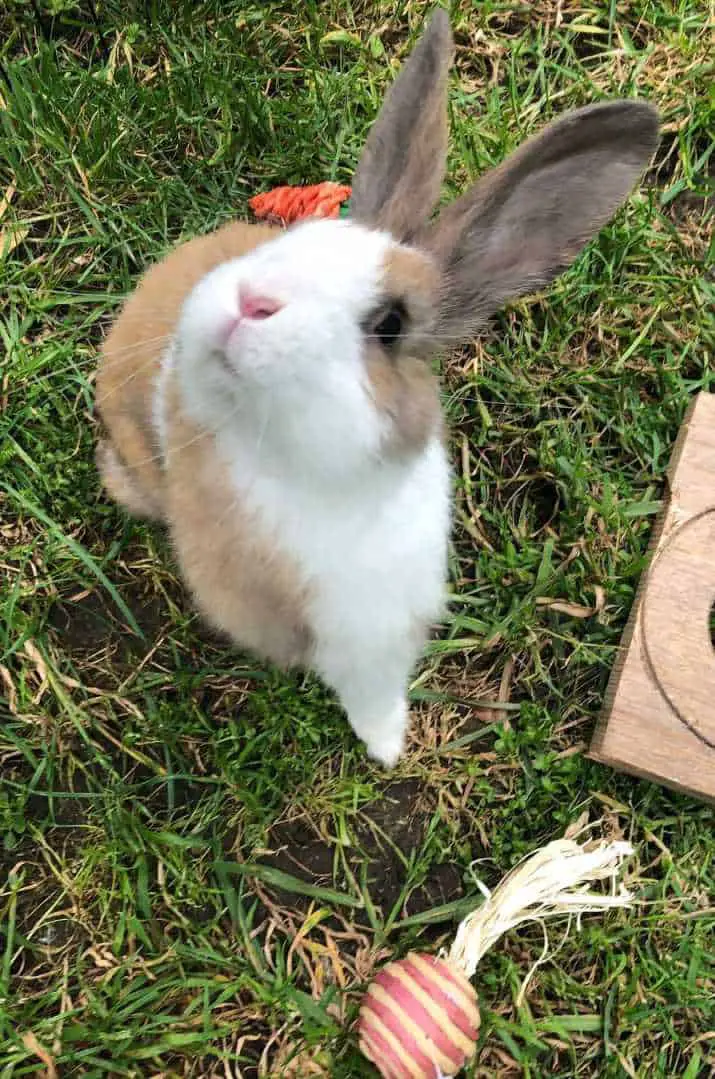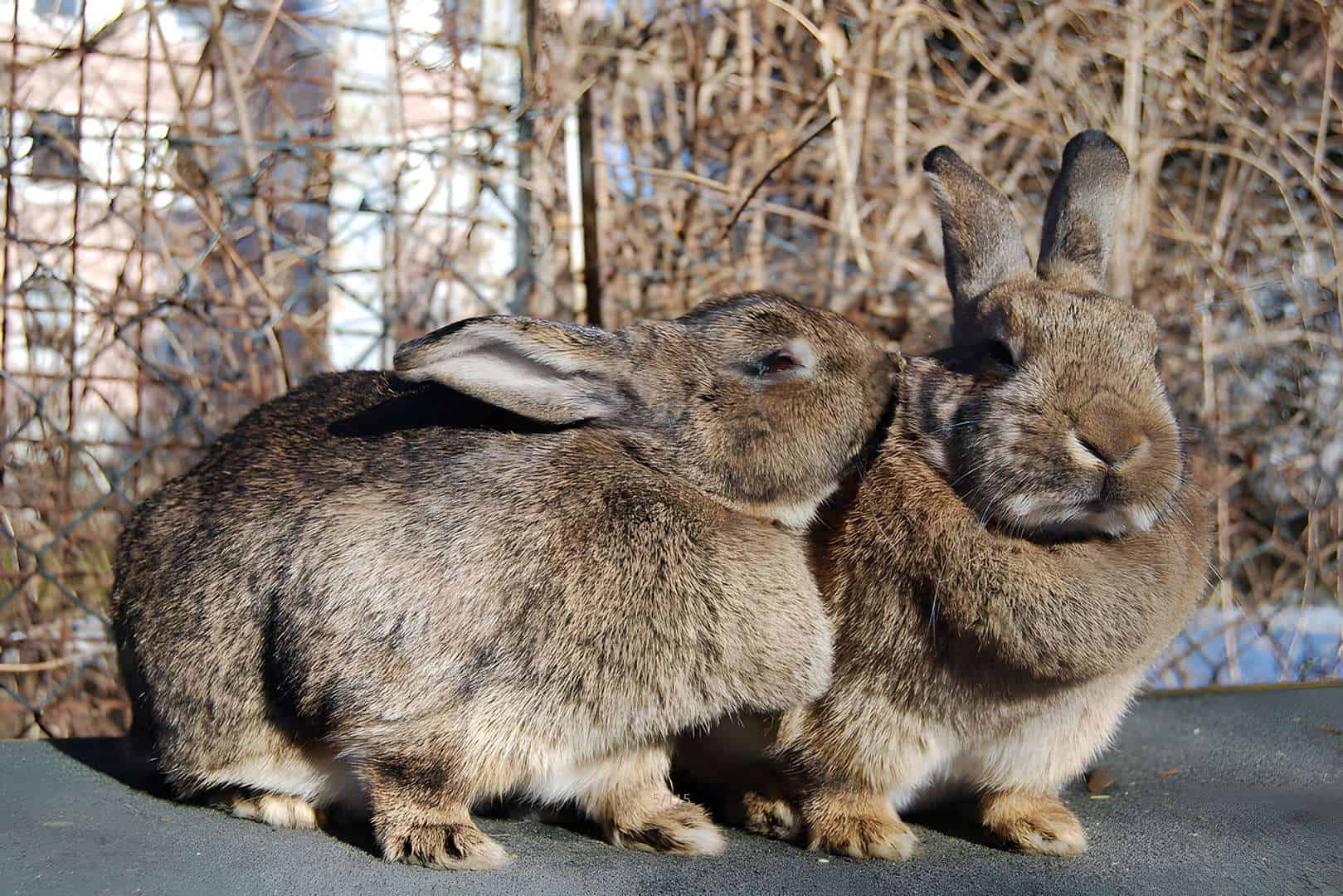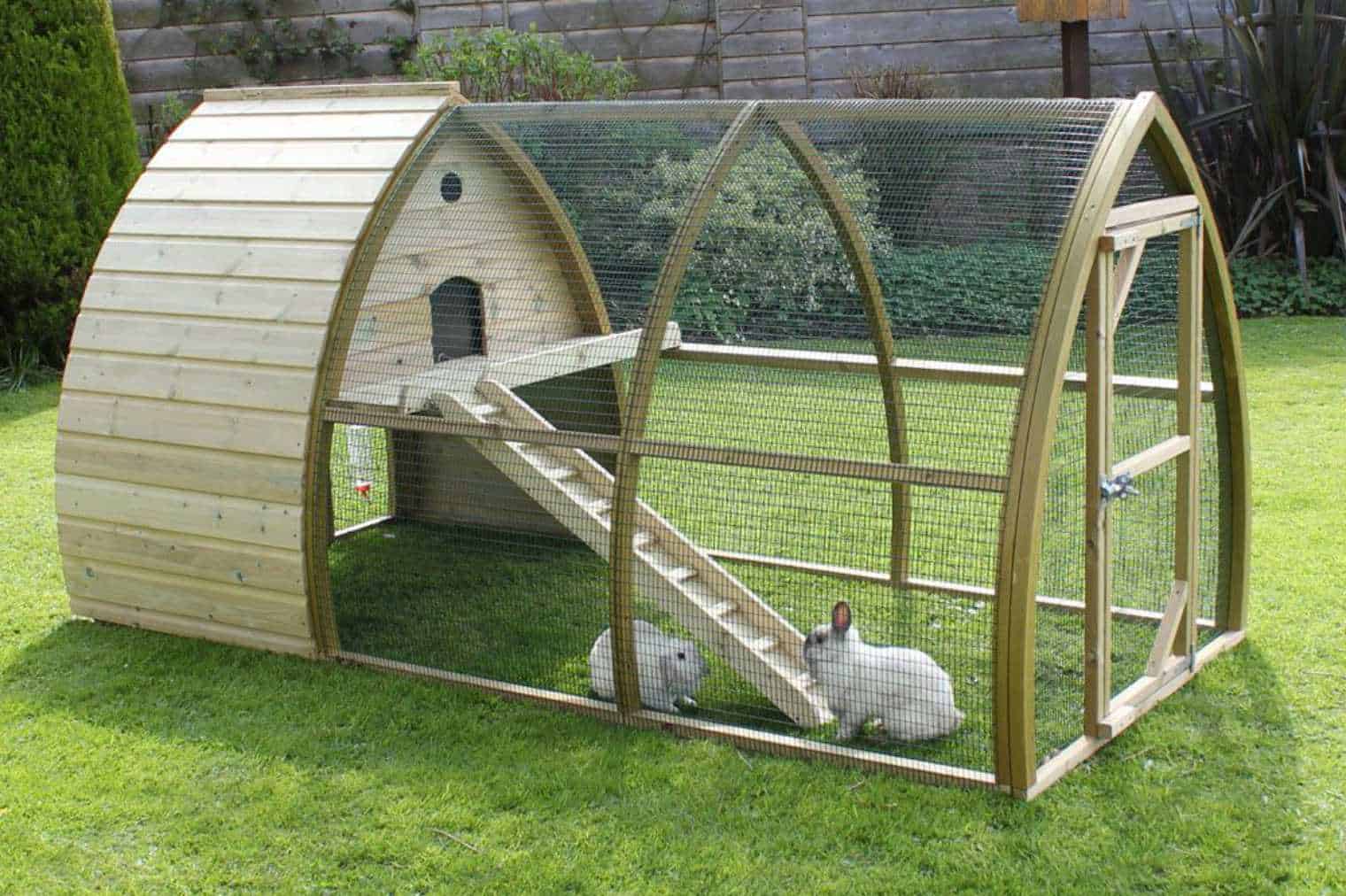Do you own a rabbit? Do you want it to stay outside? If so, you must take the necessary precautions to keep your pet rabbit healthy and happy.
It requires an outdoor environment that is spacious, secure, clean, dry, and well-stocked. Continue reading to learn how to care for a rabbit outdoors.
Can rabbits live outdoors?
Rabbits adjust well to living in the open air. Their fur coats grow thick in the harsh winter. Then, they lose the excess fur in the warm summer months like other furry creatures.
Different breeders and owners propose different ages for bunnies to stay outside. Some say they let their baby rabbit outdoors after two weeks. Others would say three months is the best.
Some breeders would sell rabbits as soon as they are weaned. Yet they may be too young to stay outside.
Spring is the best time for a rabbit to venture outside for the first time. The temperatures are warmer. They’re more like those found indoors than in the heat of summer or the dead of winter.
Outdoor rabbits can survive for 7-10 years with good care, a healthy diet, and an active lifestyle. The more you keep your rabbit safe and healthy, the better the chances that it will live longer and happier.
Can rabbits stay outdoors all year long?
Your rabbits can survive outside all year if you take specific measures during the cold and hot seasons. They can adapt to any circumstance. Just ensure they have enough food, drink, and comfortable bedding.
However, remember that they don’t do well in high temperatures. You’ll need to make sure their home is prepared for the winter months. Provide them with appropriate shelter and various ways to stay warm.
11 Tips in Caring for a Rabbit Outdoors
Purchase supplies and necessary equipment.
Rabbits aren’t just like dogs or cats, who can get by with food and shelter. They require various supplies. Make sure you’ve got everything they need before they move in. Prepare for any situation that can arise.
The following is a list of what they’ll need:
- Cage or hutch
- Litter box
- Food dishes
- Bowl or water bottle
- Exercise run
- Brush
- Carrier
- Hay
- Occasional treats
- Toys
- Chews
- Cleaning sprays
One of the most critical items is their home. Rabbits require space to grow and will not thrive if they don’t have it. They may become unwell or anxious if kept in a tiny cage.
When purchasing a hutch, make sure it is large enough for your pet to grow into. It should also provide some extra space. Ensure that your bunny can stand full stretch on its hind legs. It should run around and make not less than three jumps in the hutch.
Make sure its house isn’t directly on the ground or grass. Place it somewhat elevated to keep it safe.
If you have a yard outhouse or shed not used for something else, turn it into your rabbit’s home. Ensure there are no electric wires or automobiles around. Your pet can die from choking on cables or inhaling fuel fumes.
An exercise run is also a must. Your rabbit requires a lot of exercises like humans. However, do not allow them to roam freely about your garden.
You can attach the exercise run to the cage directly or separately. Make it three times its size or even bigger. It gives your rabbit extra room to run about and feel free in the great outdoors.
You can construct the run with a gate and a strong wire. You might need to add a roof if predators might get into it.
Set Up the Cage
The cage is the most integral aspect of keeping a rabbit outdoors. It’s your pet’s permanent dwelling place.
Line their hutch’s floor with newspapers. Then, fill it with straw or soft hay to cover the entire bottom area. Change wet straw daily. Do cage cleaning once a week.
Place 1-2 food dishes throughout the cage. Make sure they have ready access to them. You may use one dish to keep regular rabbit food and the other for treats like kale and broccoli.
Sanitize the bowls with hot water and soap once a week. Allow them to dry completely before refilling them. Your rabbit also requires a plentiful supply of safe drinking water. You can use either bottles or bowls.
If you opt for a bottle, make sure the tube does not become plugged so your pet can stay hydrated. Replenish the water supply when it runs low, so there’s always enough for it.
Groom your bunny
Your bunny requires some care and attention. So, you must be committed to grooming it. Keep an eye on its hairballs and growing teeth.
Brush your bunny several times a week. You can also buy rabbit chews at pet supply shops. They help keep your bunnies engaged and their teeth in good shape.
Give your pet a balanced diet
Hay, fresh fruits and vegetables, and food pellets are part of a healthy rabbit diet. Start with pellets for a young bunny. Then, progressively increase the serving of veggies and hay you offer.
Pellets are high in fiber and vitamin content. Also, make sure any fruits, veggies, hay, or outdoor plants your pet grazes on are free from pesticides.
Make hay always be available to your rabbits, as it should account for 80-90% of their daily nutrition. Give a quarter cup of pellets every day. Feed dwarf rabbits weighing less than 6 pounds half as much per day.
You can offer some veggies regularly like arugula, alfalfa sprouts, and basil. You can provide other veggies once every couple of days.
Protect your bunny from dangers
There are many advantages to keeping your pet outside. However, there is also one significant downside.
Predators lurk in the open air. But, your rabbit can still enjoy living safely outside. You’ll need to take extra precautions. Ensure that it isn’t exposed to elements or in danger of being captured.
Extreme temperatures could also put your pet at risk. Your rabbit may overheat during summer, so give it a cool, shaded area. It also needs enough water to stay hydrated.
Winters may be brutal, particularly in northern latitudes. If you predict a significant temperature dip or a storm up overnight, bring it inside until the weather improves.
You should also inspect the cage every day. Make sure it is weatherproof. There should also be no loose wiring or doors it could sneak through.
Furthermore, maintain the cage as sanitary as possible because its droppings and food attract pests.
The table below shows some dangers for your rabbit outdoors.
| Wild animals | Foxes, raccoons, opossums, rats |
| Birds | Large predatory birds |
| House pets | Cats, dogs |
| Plants | Poisonous flowers and weeds |
| Chemicals | Pesticides, weed killers, and lawn fertilizers |
Provide good company
Bunnies are friendly, intelligent, and curious creatures. However, they get less human contact than indoor rabbits when maintained outdoors.
It’s beneficial to have multiple rabbits, so they may keep each other company. It’s also beneficial to spend time with them. Don’t let them get lonely.
Rabbits appreciate your company. They will live lonely lives if you don’t offer them the love and care they deserve. Spend time with your pets at least 30 minutes every day. They are social animals and will be happier if they get stimulated.
Use toys to stimulate your pet rabbit
Toys provide mental and physical stimulation for your rabbits. They thrive when their minds are occupied, and their bodies are in good shape.
They’ll probably get bored after some time. Rotate the toys every few weeks, so they’re always doing something different.
Here are several rabbit-friendly toys.
- Rubber balls
- Old towels
- Brown paper bags
- Wicker baskets
- Whisk brooms
- Cardboard boxes
- PVC tubes
- Wooden clothespins
- Blankets and towels
- Shredded papers
Socialize your rabbit
Rabbits are prey animals who are wary of unfamiliar environments. They all have distinct personalities. They don’t appreciate other rabbits invading their territory.
Rabbits of the same breed usually get along fine. But be cautious when introducing them to newcomers. Also, consider neutering them to avoid getting pregnant, leaving you with another one to care for.
Handle your rabbit cautiously
As previously said, rabbits are too cautious. Loud noises or rapid movements may frighten them.
Allow them to become accustomed to your presence before lifting them. Pick them up gently when they appear calm. You can also wait for them to come to you.
Do not pick them up by the ears at any time. You want to keep a firm grasp on them so they can’t get loose. But you also don’t want to injure them. Many rabbits enjoy being cradled against your chest and having their feet rest on your arm.
Register your rabbit at your local veterinary office
Your rabbit requires regular health examinations like dogs and cats. The sooner you register it with your local vet, the earlier the vet can check if it’s healthy. They’ll also immunize your pet and provide you advice on how to neuter it.
Don’t be hesitant to ask your veterinarian any questions about your pet so you can obtain the best possible advice.
Get your pet insurance
Illnesses and accidents can happen. If your pet doesn’t have insurance, you might be on the hook for a hefty bill.
Insurance safeguards you against theft, loss, and death due to disease or injury. Check for the best coverage around and determine whether or not it’s a wise investment.
Summary
Rabbits are cute pets needing a lot of attention. Fortunately, you now know how to care for a rabbit outdoors.
Consider every conceivable safety measure to keep it around for its lifespan. Ensure that you give its basic needs like food, shelter, and protection so it can live healthier and happier.





